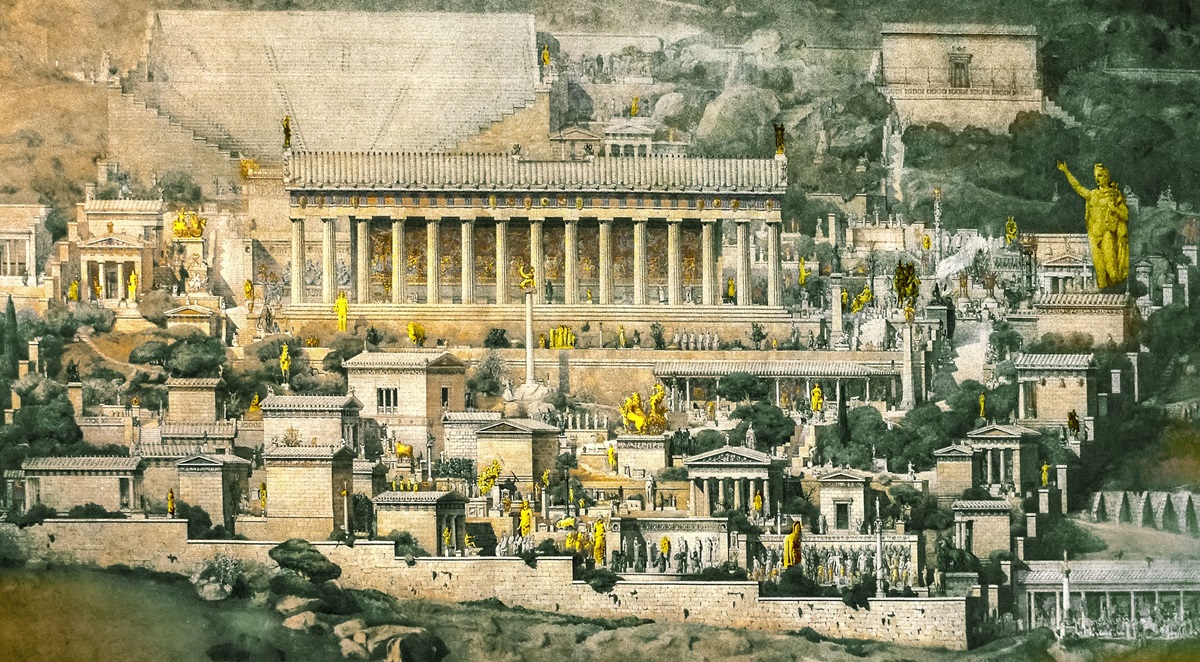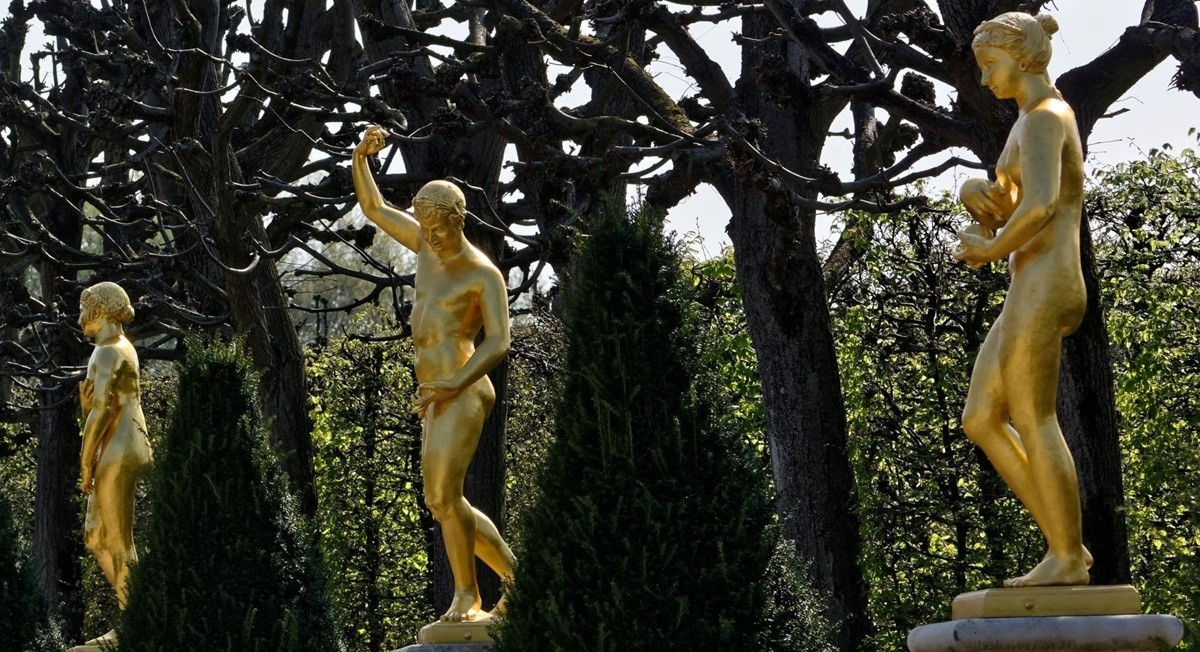ANCIENT GREEK STATUES MADE OF TIN BRONZE: REFLECTIONS ON THEIR ORIGINAL APPEARANCE FOR ANCIENT VISITORS
A statue made of tin bronze, an alloy consisting of approximately 90% copper and 10% tin, initially exhibits a highly polished, slightly reddish to predominantly golden hue. Thanks to newest findings in 2022 we know that ancient visitors to Delphi would possibly have seen statues in this gleaming golden state.
However, the surface of tin bronze oxidises relatively quickly, leading to a duller and darker colouration. Initially, a brownish to dark brown layer forms, composed of copper oxide and related copper oxide compounds. As oxidation progresses and the bronze is exposed to moisture and carbon dioxide in the air, a green patina develops. This greenish discolouration is primarily caused by copper carbonate, such as malachite, and copper chloride compounds. The patina is well-known for its protective properties, shielding the bronze from further corrosion.
Under particular environmental conditions, such as proximity to the sea, bluish tones may also emerge, primarily due to copper salts and chlorides. Thus, in its original state, a tin bronze statue would have displayed a reddish-golden sheen that, over time, transformed into a brown and later a green or bluish patina due to oxidation.
This raises the question of whether the custodians of Delphi allowed these oxidation processes to occur. If so, the statues would have lost their golden lustre within a few years, taking on the oxidised hues described. Nevertheless, there is substantial evidence to suggest that the Amphictyons preserved the statues’ golden brilliance through continuous maintenance. This assumption is supported by historical accounts from ancient visitors. Additionally, it is well-documented that significant statues of deities in Greek temples, such as the statue of Zeus at Olympia and the statue of Athena in the Parthenon, were maintained meticulously, even on a daily basis. It is therefore plausible to assume that similar care was afforded to the bronze statues in Delphi, as these statues constituted a crucial element of the awe-inspiring experience sought by ancient visitors.
The maintenance of these statues likely included the application of a wax layer, a practice that is well-documented in historical sources. Through regular care, the renewal of the wax coating, and periodic intensive cleaning of the surface, the original golden gleam of a tin bronze statue could have been preserved for centuries.
The enduring appeal of golden-hued tin bronze is also evidenced by its continued use by the Romans centuries after most of the statues in Delphi were created. Bronze artefacts discovered in Pompeii in 1998 and analysed by the Goethe University Frankfurt almost uniformly showed the classical tin bronze composition: 90% copper and 10% tin.
Conclusion: There is compelling evidence to support the view that life-sized ancient bronze statues were cast in tin bronze and presented themselves to ancient viewers in a golden, shimmering state.




